



Despite its image of rapid technological change, progress under capitalism has stalled. Spinning ever faster is not the same as going somewhere. Contemporary Accelerationism wants to take off the brakes, and it is enlisting art’s help to do so.
Taking its name (like every good movement) from one of its critics – Benjamin Noys claims credit for naming the historical tendency in 2008 – contemporary Accelerationism has both a philosophical and a political form with the latter only weakly related to the former. What Epistemic (philosophical) and Left (political) Accelerationism have in common is an attitude of “prometheanism”, of amplifying our capabilities, of rationally overcoming intellectual and material limits. Of hacking the systems of philosophical and political thought to find the exploits that will allow us to increase our knowledge of them, our control of them, our reach through them. Hopefully this will work out better than it did for the original Prometheus of Greek myth (or for Ridley Scott).
Contemporary Accelerationism may seem heretical compared to the “folk politics” and philosophy that it contrasts itself with but it is not (however some people may start essays) the capital-intensifying Accelerationism of 1970s continental philosophy or its killer-robot-welcoming successor in 1990s cyberculture. From the point of view of the former it is too immediately critical of capitalism and from the point of view of the latter it is an off-ramp on the road to the singularity. It is also not the pure speed of Paul Virilio’s dromology, or the experience of lack of time of the overworked neoliberal subject.

Accelerationism is a progressive attitude towards the liberation of reason and production – and therefore selectively technology – rather than the fetishisation of them. The “real” accelerationists in these senses aren’t working at Google, although they might in time exploit technology developed there. Chile’s early 1970s Cybersyn project provides an informative precedent. It sought to accelerate transition to a socialist economy using limited and almost obsolete mainframe and teleprinter technology. Its Accelerationism lay in the attempt to rationally analyse and spur growth in industry to increase the rate at which it developed, not in technofetishism.
Philosophical Accelerationism is “Epistemic Accelerationism”, represented in the writing of Ray Brassier, Reza Negarestani, Peter Wolfendale and others. This is a neo-rationalist philosophy, a programme of “maximizing rational capacity” and the ability to reason about or navigate our knowledge of the world. This is a self-revising, non-monotonic, socially situated reason very different from the logicism of 20th century rationalism and its detractors (although logics have advanced considerably as well).

Two new journals are taking an Epistemic Accelerationist approach to art and culture. In the UK, “After Us” shares a designer with former CCRU member Kode9‘s Hyperdub record label. In France, “Glass Bead” takes its name from Herman Hesse’s imaginary game of knowledge described in his novel of the same name. Both are haunted by the legacy of C. P. Snow’s 1950s “Two Cultures” of science and the humanities, with “After Us” explicitly invoking the need to reconcile them. This isn’t the first time such a move has been called for, and previous attempts make clear that scientists tend to make as bad artists as artists make scientists. The contemporary artworld is also not under-populated by transversal and interdisciplinary research and its aesthetics. Regardless, both provide thought-provoking cultural insights and resources. And the first issue of Glass Bead features, among other articles and interviews, Colombean mathematician Fernando Zalamea, whose accessible promotion of contemporary mathematics and production of a synthetic philosophy based on it deserves much wider attention.
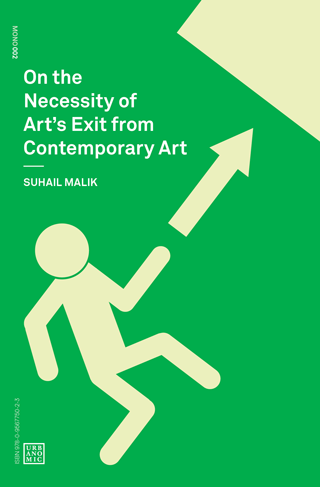
Escaping the radial velocity of asset-class zombie formalism is the focus of Suhail Malik’s “On the Necessity of Art’s Exit from Contemporary Art” (I’ll be reviewing the book for Furtherfield). Malik describes Contemporary Art’s self-image of escape (from society and art’s own limitations into a space of freedom) that disguises an inescapable and complicit recuperation of novelty. To move beyond this he proposes a strategy of exit (which contrasts interestingly with designer Benedict Singleton’s discussion of traps). This is not a seasteading-style fantasy of libertarian secession, rather it is an attempt to identify the next move in the game of art after a long impasse and to return art to a more grounded and constructive role in society.

A group centred around The New Centre For Research (whose events and video archives I cannot recommend highly enough) are seeking to apply neo-rationalism to art in order to effect just such an escape from the outsideless beige singularity of Contemporary Art. This would be an art intentionally constructed to make the rules of contemporary art and of its own construction explicit, allowing artists to reason about this and to thereby come to understand how to escape the seemingly irresistible aesthetic and political cage of contemporary art. Amanda Beech‘s “Final Machine” (2013) prefigures this kind of analysis of the structure of images and their situatedness in the networks of power that produce contemporary art. Diann Bauer‘s collaboration on the art and finance R&D project “Real Flow” is another good example. Bauer has also produced videos for Laboria Cuboniks (see below) and for accelerationism-related events. Beech, Bauer and others have held a series of discussion panels on the subject of “Art and Reason” (one) (two).

Curator and critic Mohammad Salemy has curated a series of art shows with Epistemic Accelerationist themes – “Encyclonospace Iranica” in Vancouver, “For Machine Use Only” in Vienna, and most recently “Artificial Cinema” in Prague. Each of these has created an artistic critical context for networked systems of perception and knowledge, engaging with the political possibility of their being repurposed to more emancipatory ends in the future.

A self-aware, critical, politically committed art aware of its institutional context that is nonetheless still recognisable as art may sound like a stretch but there are precedents in the work of veteran conceptual art collective Art & Language, most obviously in their early “Index” installations and in their later “Incident In The Museum” paintings. There is another way in which Art & Language provide a precedent for the New Centre group – a decade ago they theorised genre as a means of interrupting the frictionless misrepresentations of Contemporary Art, similarly to Malik’s (and, as we shall see, Beech’s) emphasis on recategorisation.
Contemporary political Accelerationism is “Left Accelerationism”, exemplified by the writing of Nick Srnicek and Alex Williams. Initiated by the “Manifesto For An Accelerationist Politics” and fleshed out in the book “Inventing The Future“, Left Accelerationism claims that some of the technologies created by capitalism can be repurposed and even intensified to enable an achievable socialist future and unleash the creative forces in society that they currently repress. As Srnicek and Williams make clear in “Inventing The Future”, this is not in opposition to other struggles but rather a means of materially supporting them.
As a group that often struggles with basic material support, the Left Accelerationist project can hold some appeal for artists. Universal Basic Income (pursued as Srnicek and Williams propose – within rather than as a reason to dismantle the rest of the Welfare State) for example would benefit artists (and musicians, actors and other creatives) in much the same way as earlier welfare state provisions. Artists can support this, rather than having to make the specific moral case for artworld subsidies, as an effective means of solidarity.

Full automation, another of Srnicek and Williams’ proposals, is the theme of the show at Kunsthalle Wien. The diverse work included drives home that art and curation needn’t be propagandistic, uncritical or overly serious to promote or engage with Accelerationist themes.
In their essay in the book “Speculative Aesthetics” (2014), Nick Srnicek proposes an Accelerationist aesthetics of transforming a “data sublime” into forms comprehendible by human beings, an aesthetic of user interface-style efficiency and transparency rather than beauty. The example Snicek gives is of transforming a complex economic model into a tool for the manipulation of economies. In the same volume, Amanda Beech (again) argues that rather than “asking what images mean, or if it is possible to mean what we say” we should produce an art that leaves behind the category of the uncategorisable in order to unravel the political project that contemporary art is subject to.
Likewise Alex Williams’ consideration of Accelerationist aesthetics in the article “Escape Velocities” (2013) emphasises aesthetics as a means of presentation of conceptual spaces, rendering them tractable to the human imagination, as well as explicitly discussing interface aesthetics with reference to Cybersyn. They also mention the concept of Hyperstition, which we will return to below.

Laboria Cuboniks are a pseudonymous collective who have produced the “Xenofeminism” accelerated feminist manifesto. It’s a strikingly designed production (the website was designed by artist Patricia Reed) that is already inspiring artistic production. The “3rdspace” show describes itself as “a response to XF and an exploration into the potentials of technology to escape modern structures of control”, building on Promethean themes.

Morehshin Allahyari & Daniel Rourke have produced the Additivist Manifesto for art in the Anthropocene (the video for it features the “Urinal” 3D printable model I commissioned from Chris Webber). They “…call for you to accelerate the 3D printer and other technologies to their absolute limits and beyond into the realm of the speculative, the provocative and the weird”. This is the kind of acceleration through (and into) art that works as both epistemic and left accelerationism without merely illustrating the program of or being instrumentalised by either. It is accelerated critical theory.

And beyond the visual arts, musician Holly Herndon’s most recent album was described by collaborator Mat Dryhurst as being designed to support Left Accelerationism.
While contemporary accelerationism is at pains to signal how far removed it is from CCRU-era Nick Land (let alone their contemporary work), the CCRU’s instrumentalised mythological theory-fiction has resources that are of interest. The slippery concept of “hyperstition”, essentially self-creating science fictional or mythical entities, is key. Cyberspace is hyperstitional, as was the writing of H. P. Lovecraft, as was Neoliberalism, and the music of Hyperdub. They are all unreal entities that bootstrapped themselves into reality via the human imagination. Hyperstition is an example of rational irrationality, or at least rationalised irrationality.

Seeking to harness hyperstition for a moral or political programme has something of the air of trying to summon Cthulhu for social justice, or to turn Skynet into a phone tree, but Williams’ “Escape Velocity” mention of Hyperstition as a means of creating visions of a better future as something that will have been possible is compelling. Hyperstition should be more (mis-)used in art than it currently is, and its creation all but demands activity outside the existing artworld.

International art collective (and CCRU collaborators) Orphan Drift‘s autopoietic mythologies realised in glitch art videos, installations and writing provide a historical point of reference here.
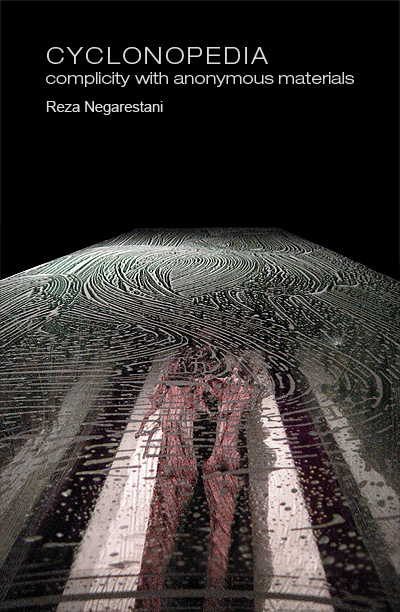
The earlier work of Reza Negarestani serves as a bridge between the CCRU era and the present. His novel of theory-fiction “Cyclonopedia“, 2008, evokes hyperstitional entities from the layers of trauma present in the politics and geology of oil and the Middle East.
In art, reason and rationality may inspire memories of dry conceptualism or stern Soviet abstraction but contemporary art’s hidden and totalising rules are no less binding and are in desperate need of exposure and critique. The task of uncovering and overcoming them presents a challenge to perception and representation that meeting will amount to much more than “art about art”. Perhaps we can use Deep Learning and neural nets to pull the ghosts of genre and medium specificity out of contemporary art then intensify them rather than make puppyslug kitsch… but that’s another story.
Left Accelerationism’s design tasks and the hyperstitional making of its future seems to have always been possible to provide more challenging alternative projects to the manufacturing of yet more zombie formalism, and as “The Promise Of Total Automation” demonstrates this needn’t take the form of uncritical propaganda.
In contrast to these approaches, I feel it’s worth asking what a direct equivalent to Left Accelerationism for Contemporary Art would look like. Which aspects of the contemporary artworld would be worth intensifying, appropriating and pushing further to create an alternative? And what would the vanishing point for such an art be in order to avoid recuperation into the generic space of Contemporary Art?
Accelerationist art is working out how to climb over the event horizon of contemporary art, helping to make a better future seem possible, analysing and transforming technocapital, and ironically intensifying the trajectories of new technology to critical excess. As the logic of neoliberalism colonizes personal space, time and identity, suggesting that we need to move faster in any way may seem perverse or complicit. Accelerationist art is part of a project to grab the wheel rather than slam on the brakes and to thereby move beyond the exhausted constraints and artistic apologetics of the logic that is eating the world.
(Updated 2016-05-18 to include more examples.)
Accelerationist Art by Rhea Myers is licensed under a Creative Commons Attribution-ShareAlike 4.0 International License.
Robert Jackson continues with a second journey into the realms of Accelerationism and Ordinaryism. Having articulated how Accelerationism merges Enlightenment principles in a supposed age of automation, Jackson interrogates its philosophical roots by suggesting that the core motivation behind its key approach embraces skepticism (even if the explicit method is to reject skepticism in favour of increasing applications of knowledge) – whereas what Ordinaryism suggests (following Cavell) is that skepticism cannot be refuted nor endorsed, only inhabited as a salient vulnerable conditon. The political implications of this division are telling and can be extrapolated through the freedom to Exit (inhuman acceleration) versus the freedom to find ones Voice (Ordinary appeal).
“But who is the authority when all are masters?” (Cavell, The Claim of Reason, p. 180).
For part 1 click HERE.
For part 3 click HERE.
In its philosophical usage ‘skepticism’ [i] hardly surfaces, if at all, in the contemporary Accelerationist lexicon. This is to be expected: as its political aspirations are organised by a cascade of philosophical trajectories designed to either refute skepticism, or as ordinaryism will claim, not bother to take it seriously enough.
Ordinaryism and Accelerationism approach familiar problems, even familiar desires, from familiar starting points, yet ultimately arrive at different conclusions. Most notably the political desire to overcome the intellectual chagrin of postmodern skepticism. Exactly what sort of overcoming is required feeds the conflict put forward: a conflict which has its history in the activity of reasoning as referenced earlier between Wilfrid Sellars and Stanley Cavell’s divulging and unique approaches to post-analytical knowledge.
Part 2 explores the following discord: Accelerationism (specifically its neo-rationalist, epistemic variant) builds a collection of political arguments which in order to work, have to refute skepticism. This is akin to (but not conflated with) the removal of skepticism in political emancipation through the practical competency of conceptual, normative reasoning. Ordinary, everyday experience is only considered as a human constraint that can be overcome or explained by a technological inhuman sovereignty of collective reasoning, where linguistic practice is essentially procedural, explanatory, functional and rule-governed. Alex Williams put it this way in his 2013 essay ‘Escape Velocities’;
Accelerationism in this guise is the project of maximizing rational capacity—the contents of knowledge about the world—and enabling the ramification of the conceptual space of reason… Enlightenment, rather than entailing an edifying reassurance of the humanistic order, instead gradually but irreparably modifies the manifest image of ourselves-in-the-world, stripping back the comforting homilies of humanism to reveal, Terminator-style, the gleaming bones of Sellars’s empty, formalist, rational subject lying beneath.
Ultimately Ordinaryism and Accelerationism want the same outcome though: the progressive aim for a better future in the face of the immediate everyday. But whereas Accelerationism thinks this can be achieved through the ascension of reason, Ordinaryism thinks it can be achieved only by acknowledging reason’s vulnerability. We must attend and attune to a diurnal world and others around us through the emotional exposure of claims rather than the Promethean expanse of the stars. Ordinaryism interrogates this force of Accelerationist reasoning and seeks a romantic alternative located in the epistemic, ethical and aesthetic priorities of responsiveness, alterity, otherness and appeal that are constitutive of the everyday and its fusion with technology. The larger attempt calls for the everyday to be reclaimed whilst surrounded by the purported effects of a ‘knowledge economy’. How is it that everytime we appeal for a new future, we are really appealing for a ‘new normal’?

The diagnosis establishes itself in the role of skepticism: and for Ordinaryists, skepticism cannot be refuted – only inhabited. Epistemic doubt has to be lived and coped with. The Cavellian lesson of the ordinary is that the world isn’t to be known, but to be acknowledged: a viewpoint which, presumably, would make the accelerationist hairs stand on end. But this not to say that ordinary acknowledgement – the everyday in general – is tantamount to political complicity and illusive habit. Ordinaryism only establishes an interest in what Cavell terms the eventual everyday, against the actual everyday of common sense, responding to the ordinary as if it appeared to us for the first time. Our relationship to others, and of the world, isn’t an exercise of philosophical skill which can be explained or solved because of an intellectual error, with its ambiguities swiped aside or viewed as insufficiently limiting. Nor is this condition indicative of ‘ordinary beliefs’ in public consensus whilst experts and technicians manipulate the structural groundwork behind the scenes: it is central to the democratic possibilities of all political activity. Bringing Cavell’s views of skepticism into focus allows us to acknowledge that politics is not well-serviced from a detached epistemological point of view: or an inhuman, impersonal space of reasons. One might wish to ask, why should any appeal to the strange tendencies of the inhuman take priority, when the familiar is equally as strange?
And following Cavell, the ‘ordinary’ in this view, is taken from the ordinary language philosopher’s commitment to reasoning. It appeals to “what we should say when..”: that any ordinary voice, what we ordinarily say, ordinarily mean, ordinarily know, has the same authority as any other when responding to what a situation calls for. Moreover, with ordinary language philosophy’s technique (in particular its leading practitioner J.L. Austin), one can simply take an instance of a word, used with certainty (I am free, I know) pick out all the ordinary, ambivalent uses philosophers don’t bother addressing, only to reveal as if for the first time, what it is we ordinarily accept everyday.
It’s a radical challenge that has a loose origin in Romanticism, but can be hinted at through punctuated periods of twentieth century philosophy. However the idiosyncratic musings of Wittgenstein interest us here, or at least those brought into fruition by Cavell’s masterpiece The Claim of Reason building towards later work on Emerson. Cavell remains indispensable here insofar as his collective, idiosyncratic view imparts a view of language, justification and reasoning based on the never-ensured acknowledgement of one other (and the claims of what we ordinarily say through one’s voice), in each specific and singular case of reasoning. This will be opposed against a neo-rational appeal to a universal inhuman force, waging on some quasi-guarantee that reason is alien, determinate and self-correcting.
In the space given I won’t be able to replicate the philosophy here at its most sophisticated, so we’ll have to settle for a more general level of enquiry that collates various, repeated aspects of the conflict involved. The remarks put forward will hopefully show why a Cavellian normative ‘Voice’ or ordinary appeal is an indispensable political tool, only because it treats skepticism seriously as an ordinary task in a world of increasing automation, not to superseded by a warped view of technology that can overcome it. Ordinaryism sheds a Cavellian insight that our relationship with technology fundamentally pivots on living our skepticism: inhabiting our condition, acknowledging our vulnerability, making ourselves intelligible to others, desiring an intimacy with things and establishing a voice to do so. The additional requirement here, comes to terms with the notion that skepticism isn’t a unique feature of ordinary language projected onto the world (as Cavell held), but is now operationalised in machinic systems. This is explicitly against an accelerationist insight, that machines operationalise the ascension of inhuman reason.
The problem is that Accelerationist reasoning simply refuses to consider skepticism as a problem, ridicules the everyday and instead pines for an inhuman, rule-bound determination of normative governance, which the ordinary cannot achieve. By doing so, it appears unconcerned with political dangers once the voice of others is rendered insufficient: that we could fail to acknowledge others, unwittingly presenting our relationships to knowledge and of other minds as unproblematic.
This unorthodox schism on reasoning can be exposed into a more contemporary technical conflict vying for political, philosophical and technological priority – call it, the freedom to Exit (inhuman acceleration) versus the freedom to find ones Voice (Ordinary appeal). The claim being that all political repercussions of Exit versus Voice pivot on whether you can refute skepticism, or inhabit its condition.
Over two years ago, Stanford University lecturer and entrepreneur Balaji S. Srinivasan delivered a speech at the 2013 Startup School event, entitled “Silicon Valley’s Ultimate Exit” (Transcript here). His talk was noteworthy for galvanising Silicon Valley cohorts into a usual online futurist catatonic stupor. But like all effective presentations Srinivasan delivered one simple, established idea into a contemporary setting and did so with honesty and gusto. Silicon Valley’s seemingly unstoppable knack for disrupting nearly all forms of cultural production and communication can be unpacked from an insight in 1970s political science.
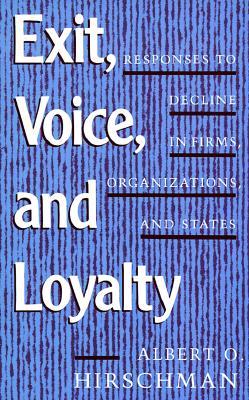
Srinivasan paid tribute to the landmark libertarian 1970 treatise “Exit, Voice, and Loyalty: Responses to Decline in Firms, Organi[s]ations, and States” by Albert O. Hirschman, in which the author stated the following economic conjecture: When any particular form of human system culturally designed to offer a service (a business, charity, government, country, state, school, etc.) experiences a decrease in quality, they have two options for freedom; either Exit or Voice. Put simply, Exit is the attempt to withdraw completely from the relationship provided with the aim of joining or starting up another, whereas Voice gives the customer the right to reform the existing relationship through protest and complaint.
Hirschman used these two options as a prism for opening up a range of economic and political outcomes that encapsulate ones freedom, equally emphasising that such models were mutually exclusive, operating in a parallel stop-start fashion. He understood Exit to be exclusively libertarian where freedom was guided under the economic freedom of the market, where decline could be corrected by ‘better’ services. Voice became the political freedom to confront existing decline by reforming the system within. Unpacked into differing global contexts, Exit vs. Voice shifts into multiple flavours of freedom, emanating from the same source. For a consumer, Exit manifests itself as the freedom to take your business elsewhere, whereas Voice is sending off a complaint form. For a country, Exit becomes emigration whereas Voice becomes the democratic right to vote. In the case of lobbying, Exit expresses itself as the think tank, whilst Voice emerges as the grassroots protest.
However Srinivasan took Hirschman’s options and gave the distinction a new technological edge relatable to an age of platforms, code, startups and disruption. Srinivasan suggested that Exit is a meta-concept which Silicon Valley has implicitly adopted, subsuming Voice without eliminating it (and perhaps even amplifying the latter). It is the hidden gear behind the Valley’s dominance, from various startup successes to the inherent properties of code itself. He cites the fact that Larry Page and Sergey Brin could never have reformed Microsoft from within, and so had to found Google by attaining the freedom to exit Microsoft completely, taking the sustained knowledge of their peers and independently crafting something smarter and better. Similarly, in software engineering if Voice operates as a patch designed to reform existing functional problems, Exit is the fork designed to splinter an existing platform of ineffective decline into a separate, and (presumably) more effective one.

But Srinivasan’s talk was essentially in support with ‘ultimate exit’ – the idea that the United States itself was completely beyond libertarian reform, and that Silicon Valley would in the next 10 years have to secede, and launch its own independent platform if it wanted to maintain freedom. Srinivasan’s rationale (which has solidified its popularity since 2013) is that if you can do it with a startup why not an entire country? It’s not exactly a pipe dream wither. A failed startup called Blueseed already sought funding in order to attempt such a feat, but it was eventually postponed. Blueseed was the closest attempt at creating an ultimate Exit, where a purposely built cruise liner, sailing twelve nautical miles from San Francisco, would allow entrepreneurs to create their own businesses without the need for a U.S work visa. Earlier still, a 2005 startup called SeaCode promised something similar, but similarly folded due to insufficient funding.
In the eyes of the Valley though, the Exit strategy has successfully challenged existing industries anyway; including Hollywood (through Netflix), print and television outlets (through social media), city transport (through Uber), currencies (through Bitcoin and Blockchain), healthcare (The Quantified Self movement), and even simple objects (3-D printing). Before the backlash hit the fan, Srinivasan’s foresaw that the only future worth betting on would involve building “an opt-in society, ultimately outside the United States, run by technology.” Who is John Galt? Presumably Balaji S. Srinivasan.
Randian fetishes aside Exit versus Voice is a clever forced choice. It’s designed to organise a schism in contemporary political thought where cultural activities and labour are increasingly wedded to automation: from casual acts of ordinary communication, to the darkest depths of hidden encryption. It’s a schism which the theoretical movement of Accelerationism is borne out from, despite the clear difference of its political goals and the varying flavours bundled with its name. Replacing Srinivasan’s libertarian freedom for a hard left emancipatory stance, Exit is now construed as engineering a post-capitalist exit, and ‘opting-out’ becomes inventing and repurposing technological infrastructure towards emancipation without losing any of the inhuman significance that got it there.

What is it however that philosophically separates the contemporary Left accelerationist position from previous iterations unable to grasp the future, or have resisted such attempts? We are of course reminded of such post-structural flights of fancy, (accelerationist musings of Lyotard, Deleuze and Guattari) to the experimental Cybernetic Cultural Research Unit (CCRU) whose famous figureheads included Nick Land & Sadie Plant. As many have already written, Land has become the quintessential prophet of the contemporary ‘Exit’ strategy (both in his early philosophical work, and later activities) understanding capitalism to be the ultimate engine of inhuman freedom. If our manifest fate is destined to head towards a technological singularity, it has only been put on ice because of meddling Marxists and (in his eyes) a dribbling progressive State. Having reorganised his views into neo-reactionism (NR-x), (which Srinivasan’s talk contributes to and in no small part, influentially gravitated a great number of libertarians towards), Land has one goal: the full realisation of ultimate exit. As Park MacDougald put it last year, Land’s;
Laissez-faire, in this view, is doomed to failure as soon as it’s up for a vote. Rather than accept creeping democratic socialism (which leads to “zombie apocalypse”), Land would prefer to simply abolish democracy and appoint a national CEO. This capitalist Leviathan would be, at a bare minimum, capable of rational long-term planning and aligning individual incentive structures with social well-being (CEO-as-Tiger-Mom). Individuals would have no say in government, but would be generally left alone, and free to leave. This right of “exit” is, for Land, the only meaningful right, and it’s opposed to democratic “voice,” where everyone gets a say, but is bound by the decisions of the majority — the fear being that the majority will decide to self-immolate.
Shockingly, Land’s NR-x demands the elimination of democratic voice altogether because, in his view, economically and socially effective governments legitimize themselves eschewing any appeal for a democratic voice. There isn’t any need for a voice if, like a commercial service, you can just exit your government and join a better one. So long as the functional technocratic inhuman is maximally realised there can be no room for moralism, sentimentality or suffering, for these are the very human traits which hold back our genuine freedom. Bending the market to fit human empathic needs will be futile. The sustained requirement for humans to lend a voice of political appeal is simply too ineffective to halt the inhuman onslaught of capitalist acceleration.
Cemented into the freedom to Exit is the implicit determination that all global technological progress (and its inherent possibilities as production) is bound up with the invisible, impersonal rigour of inhuman market competition, which democratic voice has little hope of addressing, let alone overthrowing. In Land’s view, capitalism is akin to an inhuman non-conceptual alien automatically programming human behaviour in order to drive it forward. This strange, foreign compulsiveness is integral to our dystopian future and Land’s job is to let the tap run (or more accurately, don’t pull the charger out).
So with Land’s current brand of libertarianism leaning more to the right than someone whose right leg has just been blown off, the political ground to develop a Left accelerationism has been given renewed impetus. As Peter Wolfendale previously pointed out, both positions jointly agree that capitalist production and modern developments of social justice are utterly incompatible, and the site of their incompatibility combined with technological expertise is what motivates both to conceive of an Exit: but crucially the discord between them comes from which set of principles should be exited from, and what sort of freedom is called for;
The right thinks that the accelerative emancipatory force is nothing other than capitalism itself, whereas the left thinks that capitalism is an adaptive and plastic obstacle suppressing a deeper emancipatory dynamic. It is in essence a disagreement about freedom: what it is to have it, what it is to enhance it, and whether there is anything we can do about it.
What both forms of freedom inhabit is to construct an exit from the limitations of the current status quo entrenched in reaction, resistance, refusal and reform. If the force of ‘Exit’ is what both movements share, then they also share the same schism of opposing Voice. And in one name or another, this is exactly what Nick Srnicek and Alex Williams have dubbed ‘folk politics’: political methods which eschew inhuman knowledge, global reach, feedback and technological infrastructure favouring instead outdated methods of reform, simplicity, horizontal plurality, immediacy and reactive protest (the 2008 Occupy protests being one example of many). In short, politics that might be associated with the demands of Voice. They may not wish to call it Voice, or be opposed to Voice democratically, and might even propose that it has some sort of place in contemporary political struggle. However, their opposition to a certain form of phenomenological immediacy in authentic resistance (which Voice might certaintly inhabit), carries all the connotations of leftist action they find strategically moribund. Reform and resistance are no longer the sole legitimate leftist options to overcome capitalism.
Their logic is two fold – 1.) reforming the capitalist system through protest, localism and critique alone has become useless at furthering leftist goals, often resulting in unashamed defeatism. Human acts of immediate protest and localism are no longer any match for the long term planning of inhuman complexity that global capitalism has become. The left simply sets itself up to fail.
2.) In light of this failure, contemporary leftist politics has a choice: either reduce political action to a relatable human local level, or embrace complex conceptual mediacy of capitalist process. In adopting the latter, the technological tools at our disposal afforded by capitalism must now invent alternative platforms repurposing leftist change, rather than chastised as oppressive, skeptical limits inherent to it. The left can no longer solely rely on ‘having a voice’ which appeals to habitual sit-ins and sporadic acts of resistance: it must invent alternative methods of infrastructure that will eventually abandon the need for capitalism, overcoming leftist resistance and reform completely (think André Gorz, but with Big Data and Apps).
The output of that challenge operates through various interlocking projects:
—Political theories for how a post-capitalist world that abolishes work can not only be made intelligible but be feasibly engineered (see Srnicek and Williams in their recently released publication ‘Inventing the Future: PostCapitalism and A World Without Work’ published by Verso). To be clear Srnicek and Williams entirely abandon the term ‘Accelerationism’, or ‘Left-accelerationism’ not specifically because of disagreement, but to alleviate widespread confusion.
—Renewed commitments to nineteenth/twentieth century cosmicism that manifests in a post-Earth future. Or alternatively treating science fiction as a necessary path towards a real exit (in its absolute form, exiting the Earth). (See Benedict Singleton’s Maximum Jailbreak)
—Regrounded developments in feminist strategies (see the recent xeno-feminist (XF) manifesto), by the anonymous collective Laboria Cuboniks which in their words asks that “Reason, like information, wants to be free, and patriarchy cannot give it freedom. Rationalism must itself be a feminism. XF marks the point where these claims intersect in a two-way dependency. It names reason as an engine of feminist emancipation, and declares the right of everyone to speak as no one in particular.”
—New strategies for art that oppose contemporary art’s global hegemony (See the forthcoming publication ‘On the necessity of Art’s Exit from Contemporary Art) by Suhail Malik. One might see a recent influence in Holly Herndon’s song “An Exit” which is describes Malik’s exit as “rather than act in angry opposition to an existing aesthetic or marketplace, we just walk away, facing towards the future”.

Yet, the lynchpin that passes through these varying outputs has one additional philosophical goal: one that has reshifted the political site upon which inhuman freedom can be realised through an interconnected philosophy beginning to rethink contemporary forms of reasoning, knowledge and rationalism.
What gives the Left accelerationists an injection of substance is not merely repeating Marxist demands that capitalism is an unjust, unequal system which promotes corpulent wealth, but that it primarily holds back the progressive and explanatory capacities of inhuman reasoning and technological progress (or at least that Voice, under this view, can only ever be the immediate starting point for an inhuman ascension).
Simply put, Left-accelerationism recognises both the lack of freedom and rationality and seeks to restore both in a more contemporary guise: the normative aim of constructing political freedom in ever greater inhuman measures. Thus the additional impulsion of Srnicek and Williams’ project stresses that the only method of overcoming capitalism is to self-master our epistemological knowledge of it , in order to apply methods that structure leverage towards rational self-determination. Here one almost tastes the accelerationist contempt for Leftist skepticism, and all of its appeals to doubt that have become complicit in contemporary forms of political action undermining progressive futurist thought. Skepticism for them, only bestows reason with a staggering lack of imagination and of lives that entirely accept the limits of neo-liberal stupor wrought by epistemic immediacy and affirmationist philosophies (distancing itself from the vitalist aspects of Deleuze and Guattari plays a key developmental role here).
The philosophical appeal toward a universal rationalist epistemology supports accelerationism’s desire to reengage with the Enlightenment project, where freedom becomes the binding of oneself to a universal rational rule (that must include and surpass capitalist and economic development) together with an adherence to that rule. More importantly the universalisation required must be a movement of Promethean ascension which promotes, as Williams puts it alongside Srnicek in an interview with Mohammed Salemy: “the idea that through our knowledge of the world and through political struggle, too, we can open new ways of being free that were unavailable to us before.” Inhuman Exit is rescued from the libertarian darkness of the NR-x hand, and into the clutches of unending rigorous collective reasoning. Inhuman freedom is repurposed away from compulsive slavery of alien market forces, to an alien rationality of a free rational subject that might exit from capital. The only alien demand is an inhuman demand to self-master our own possibilities towards rejecting capitalism (towards a post-capitalist future).
Williams has previously suggested that the twin thinkers of epistemic accelerationism are Ray Brassier and Reza Negarestani (whether these thinkers agree is another matter). Both are highly influenced by Land, and both are committed to an anti-skeptical method of gaining knowledge about the world, where the freedom to reason emerges as rule-governed, practical, revisable, autonomous and collective, not reducible to the manifest experience of humanity yet central to its emergence. Their neo-rationalism repeats the enlightenment’s desire to explain and act on the collective determinacy of the human epistemological condition outside any specific context.
The freedom to self-master an Exit lends its the support for a universal rationalist epistemology as enshrined within Sellars pragmatism (as outlined in Part 1 ). In this guise freedom becomes, according to Brassier, “… not simply the absence of external determination but the agent’s rational self-determination in and through its espousal of a universally applicable rule.” For complicated reasons Sellars sets out a pragmatist view of reasoning which is defined by its anti-skepticism as much as its Promethean promise (dependent on which thread of influence you follow). What makes such freedom a feature of pragmatism is that rationality is understood as an inherently social linguistic activity as well as a rule-based resource for expanding collective knowledge. Freedom through reasoning is grounded in essentially public and social normative practices of communication, that account for the correctness and incorrectness of ordinary linguistic usage and function. The accelerationist motivation is compelled by a pragmatist sensibility that rationality is founded by the capacity of a community to ‘agree in’ statements and judgements as normative commitments and entitlements. This domain from which freedom resides, and where it can be emancipated from, lies in a shared conceptual framework of utility.
The notion that human creatures are defined by living in a normative space of reasons has obvious overlapping concerns with the origins of philosophy, but only really found its teeth in the Enlightenment. The idea that I, as a rational subject can apply a certain concept means I must be committed to or bound by certain consequences. This can be traced through Plato and Aristotle, although the history takes its initial cue from Kant who understood human concepts to be uniquely and fundamentally normative, despite their finite status. Hegel then builds on Kant’s normative insight, eschewing the acknowledgement of finitude, by showing how freedom emerges from normative constraints inherent to discursive social statuses. Or putting it differently, developing an insight that the creation and generation of ideas and concepts arise in a shared normative medium. Freedom is thus, socially expressive, constitutive of norms and rules that already govern and constrain it, yet also subject to generative possibilities which it entertains. As Robert Pippin puts it;
… the problem of freedom, and in the Kantian/Hegelian tradition […] means being able somehow to own up to, justify, and stand behind one’s deeds (reclaim them as my own), and that involves (so it is argued) understanding what it is to be responsive to norms, reasons.(Pippin, The Persistence of Subjectivity: On the Kantian Aftermath, 2005, p. 11)
One of the most influential Hegelian ideas that the epistemic accelerationists have adopted (amongst others) is that without any justification, inferred assertion or claim – let alone a political claim – intelligible forms of progressive political action or agency are out of the question. No human communication occurs, principally, within the sole reducible product of a human individual, but as a distinctly social progressive achievement of reason and that ordinary modes of intelligibility have to be cemented in normative commitments of correctness. The job of philosophy is to offer an explanation constitutive of the very normative system it seeks to explain. Recoding these Kantian and Hegelian insights is said to establish and explain the inner workings of what we mean when we say something.
Clearly, the real reason why such Sellarsian normative accounts are useful is that they are characteristic of many philosophical attempts to comprehend language through a systematic and explainable structure, fully applying the force of reason with practices that commit effective conceptual action. It strips the rational subject back until it finds the primitive inhuman, artificial, functional, rational ‘machine’ guiding the system through the freedoms of feedback and function: What Sellars demarcates as the sapient, normative space of reasons (doing something for a reason) is understood to be completely separate from the sentient, causal nature of reasons (doing something because of a reason). Norms of reasoning cannot, like natural laws, suggest what will happen, but instead what ought to happen, and pinpoint shared, rational outcomes that can be correctly drawn from certain assumptions.
Responsibility and recognition cannot make sense outside of its social, discursive emergence, as is the case of any concept whatsoever, for concepts themselves are characteristically normative. Judgements that express knowledge are distinctively responsible and moreover they express themselves as social commitments. Normative claims and reasons are usually understood as not only bearing commitments and entitlements that take place in discursive behaviour, holding others as responsible, relating to an ideal, rule or standard: they are part and parcel of what it is to be a rational subject. Normative claims are taken to be reciprocal recognitions between human creatures who then take other assertions to be reciprocally rational and assertive to normative ideals, and thus expressive freedom is generated and determined. Thought and expression in this light, begins to give us a manifest grip on a non-perceptual world, which isn’t typically manifest (the dual roles of Sellars’ Manifest Image and Scientific Image provide this ‘grip’). The application of the concept, establishes what is correct as opposed to what might be taken to be phenomenally correct (and thus potentially wrong).
No wonder then this view appeals to general artificial intelligence as a futurist necessity, because sapience must be understood as different from the natural order. This is where Sellars’ anti-skepticism becomes obvious: not only reducing all human voice and communication to a primitive, determinate and rule-governed inhuman process which silently determines our linguistic activity, but at the same time, fully unleashing its ability to explain all possibilities of human communication, as well as what it means to freely communicate at all. It is distinctive that this peculiar inhuman force determines how we ought to act, only insofar as we can conceive it – seeing language this way is what demarcates the normative from the naturalistic, acting on norms is dependent on our recognition of them. Voice and speech simply becomes subordinate to this normative demarcation, because what we say is reducible to what can be thought.
This expressive toolkit for establishing a rational grip on non-perceptible systems in the world is necessary for epistemic-accelerationism. Like Land it commits to the idea that intelligence is wholly functional, but not tied to the machine of the free market, but the machine of rationality (which Land abhors). If it is the case that an inhuman grip of capitalism evades human representation, and with climate change becoming an ever greater non-human concern, then the entrenched political tactics of Voice, the task of the human, must embrace the promethean progress of science and technology and ascend our current cognitive resources accordingly. Srnicek thinks we can do this by returning to Fredric Jameson’s cognitive mapping – “the means to make our own world intelligible to ourselves through a situational understanding of our own position.” Other theorists express the same premise, but in different flavours: the field, the plot, the thread, the yarn. All yearn for the same process: the ongoing project to expand our cognitive intelligibility so that the left can master, identify, calculate and classify invisibly complex systems so as to change them for the better.
However, before we start (or try to start) building space programs and hedge funds for the Left there is a problem. Giving up on Voice becomes far too hasty, insofar as the accelerationist view of Voice is inherently predicated on function, it undermines the very intelligibility it desperately craves. There is a greater depth and vulnerability to Voice that must be addressed which stretches further than the quagmires of reform and resistance. If political intelligibility is predicated on problems of knowledge, questions surrounding what happens to political voice appear to be eradicated. So what happens to it? What might take on the form of addressing normative claims which speak on behalf of others? What might be the unintended political effects of “everyone speaking for no-one in particular”. How does this affect the silenced, who wish to make themselves known, rather than ‘being known’?
It’s easy for the epistemic accelerationists to address political authority if reason’s ascension can be established, but the harder questions arise if reason’s authority is primarily established by vulnerability.
[i] – I’m adopting the American spelling of skepticism here, in large part, because it’s easier to quote from Cavell texts for susequent sections.
Just think about the ordinary, and by that I mean not an ordinary life, event, custom, or thing (at least not yet), but the ordinary as such.
We can never fully exhaust the ordinary – how could we? For as sure as we try to get close, the ordinary becomes something else. Elusive – in the same way that words, peoples, names and symbols become strange if we concentrate on them too long. Neither does anyone grasp the ordinary in sheer ignorance, because its ordinariness just evaporates in retrospect. The ordinary claims little attention only because it is ordinary and is implicitly taken on that account. The extraordinariness of the ordinary has to be rejected if its implicitness becomes something we unavoidably accept. Yet, its givenness appears unproblematic insofar as it remains unacknowledged. The ordinary is what happens when we’re concentrating on something else: it is what constitutes the ontological furniture of the world.
Nevertheless, the ordinary remains drastically important, as it always was: and yet its implicitness already remains curiously forgotten, waiting to be exposed or made present. As Charles Bernstein writes in The Art and Practice of the Ordinary, “any attempt to fix the ordinary pulls it out of the everydayness in which it is situated, from which it seems to derive its power.” Representations and objectifications of the ordinary claim transparency to its own cost.
“Science” wishes to naturalise the ordinary into a neat little piecemeal encroachments of textbook knowledge and then move towards the next eliminative paradigm. Technology commandeers the ordinary seeking to render it more efficient and effective for the benefits of, well, hardly anyone but futurists. Traditionalists seek to undermine the ordinary in favour of some primordial ordinary which benefits some reactionary stupor. Global neo-liberalism commandeers the ordinary even further, waging that no-one will change anything in it for lack of time or for opposing the marketplace. Everyone has access to the ordinary, even though the ordinary remains unaccessible.
Yet it seems that whatever we do, whatever new particle is discovered, whatever new economic theory found, or new conceptual scheme offered – the coordinates of “normality” and “convention” might change, for some at least, but soon after the ordinary returns, with a hidden shrug and an hour to kill. Faster computation and digital transmission may have egged a generational shift of Western production, knowledge, communication, control, community, yet the ordinary still prevails only by re-shifting and re-configuring itself: different uses, words, things, together with different uses of words and things. The concrete acknowledgement of banal yet entirely extra-ordinary things constitute the bizarre ecology of the ordinary, which operates regardless: detached memes, first-world jokes, boredom, mediocre top 10s, compassion, political intrigue, scoops, as well as emotional heartache.
Different cultures, tribes, gangs, and communities have their ordinaries: everyday customs and uses, most different, some utterly indifferent to one other. Some ordinary customs hold the relevancy of others to account. Yet the ordinary is clearly there, unshakeable and implicit, yet also unmistakable and haunting, without any essence of natural custom to which it can be easily assigned. It has just a background assumption of ‘bleh’, or ‘meh’ with no distinctive features to explicitly signal its silent functioning.

Why am I waxing lyrical abut such matters? I do so in the effort of introducing an underdeveloped but convergent alternative. Not one that has any justification nor merit of its own, but one that exists, for the most part, as an epistemological alternative to what has hitherto been called accelerationism: and how the tensions and similarities of both positions impact art, literature, science and especially systems.
The doctrine of accelerationism is accelerating, as it should be (Twitter hashtags and all) making giant leaps in art and cultural theory circles. By no means does it signal anything concrete, (at least not yet) than it provokes the insistent beginnings of a modern political doctrine: one that joins up similar threads of interest across disparate thinkers and topics. Of late, it has enjoyed multiple discussions online, a recent symposium in Berlin, the sole topic for an e-flux journal on aesthetics, a forum held last year, and an expectant anthology from Urbanomic.
Coined by Benjamin Noys in The Persistence of the Negative: A Critique of Contemporary Continental Theory, the acceletrationist doctrine takes many forms, but by and large, its aim is to accelerate, conceive, invert and uproot capitalist infrastructures and abstractions using the abstract epistemic resources of capitalism itself. For Marx and Engels this required the dialectical development of capitalist contraction towards its ‘inevitable’ destruction. Deleuze and Guattari famously mused that the process of capital was to be accelerated, and in its darker, more heightened levels (most famously, the macabre futurist machinic practice of Nick Land), it meant pushing the social deterritorialising force of capitalism into its inevitable post-capitalist future.
In its early stages, accelerationism established a darker, more virulently techno-nihilistic strain of theoretical terror. Land was spellbound by the 90s demonic growth of neoliberalism: for it possessed, not just some freaky quality of being utterly impervious to any resistance of leftist critique, but the singular quality of accelerating unparalleled technological progress. Land’s future was a rumbling techno-capital singularity smuggling itself within collapsing human civilisations until the latter would eventually be creamed off. These views eventually drove Land out of academia but remained a curious alternative to other political responses: a darker alternative to fields of protest, against disruption, antonomist intervention, situationist détournement, hackitivism or a resuscitated dialectical antagonism.
Filtering out the hysteric reactionary stupor of Land’s thought, contemporary thinkers have begun to rethink accelerationism beyond the squalid drive of accelerating capitalist contradiction. Nick Srnicek and Alex Williams, who co-authored the widely circulated Accelerationist Manifesto, have clearly articulated this view, rejecting Land’s singularity but endorsing the use of capitalist quantification techniques, engineering, infrastructure, persuasive models, and advanced computational affordances to accelerate the modern left. Whereas leftist thought has sought to question, undermine or even reverse modernity, Srnicek and Williams suggest that radical thought must accelerate the mediums of capitalist production into a post capitalist future. They proudly assert that “if the political left is to have a future it must be one in which it maximally embraces this suppressed accelerationist tendency.”
Against what Srnicek and Williams term “folk politics” (the title for their forthcoming publication) – defined as “localism, direct action, and relentless horizontalism” – an accelerationist politics preserves neoliberal infrastructure, but intends to push its affordances faster than neoliberalism would allow: in particular a basic universal income and the reduction of work (through automation). For them, folk politics has no big picture, nor any infrastructural plan beyond a ‘the party’ or a ‘horizontal network’: no method of effectivity or material advancement. In a separate article they condemn the conservative left for reducing themselves into “trafficking in the politics of fear, rather than the politics of freedom and the project for a more just society”.
Technology is to be used as method of “furthering leftist goals”, that is, building a material platform for a genuine post-capitalist societal framework. The emphasis is on accelerating modernity and progress, not accelerating contradictory speed (the latter evident in, say, high frequency trading), investing an understanding of post-capitalist infrastructure through new economic models and repurposed machinery. There is no wiggle-room here for Srnicek and Williams: either build a post-capitalist future or don’t. Either establish or experiment towards a broad ideological vision for accelerating the future or repeatedly fail. Failure, in their eyes, is not a thing of beauty, but a path towards an alternative future. Instead of leftist faith, Srnicek and Williams advocate alternative means of building an infrastructure of the future.
And there’s a lot here to agree for the most part. The left has instigated a lot of its own irrelevancy by ignoring or rejecting the often affective affordances of technology – rather than changing its use, or learning how to build a more just society. Yet, accelerationism’s major problem concerns itself with peddling a systematic theory to explain the practice of doing all the stuff the left failed to realise. What happens to the ordinary?

Within the accelerationist doctrine lies an old epistemological assumption that the problem with political thought is the rejection of progress, and the mastering of knowledge: that folk politics has suppressed knowledge and progress to its cost, whilst capitalism marched onwards and upwards, mostly upwards. All of this is partly accurate. Yet philosophically, accelerationism is more than these insightful remarks, and justifiable political demands. For Srnicek and Williams:
“The movement towards a surpassing of our current constraints must include more than simply a struggle for a more rational global society. We believe it must also include recovering the dreams which transfixed many from the middle of the Nineteenth Century until the dawn of the neoliberal era, of the quest of Homo Sapiens towards expansion beyond the limitations of the earth and our immediate bodily forms. These visions are today viewed as relics of a more innocent moment. Yet they both diagnose the staggering lack of imagination in our own time, and offer the promise of a future that is affectively invigorating, as well as intellectually energising.”
Accelerationism then, is not just a new doctrine for the left whom have failed to reignite the dream for a better future, endlessly squabbling over moralistic games of trumpery, but a renewed praxis (and only that) of enlightened self-knowledge. Accelerationism is a renewed humanism that seeks to re-master the world. As a “Right-Accelerationist” this is as much as Land wants, accelerating reactionary aristocracy past democratic values (Land’s so-called Dark Enlightenment). As “Left-Accelerationists, Srnicek and Williams declare that only a radical “maximal mastery” of renewed Enlightenment values will secure victory over capital, in an age where modern infrastructure is constituted by complexity and systemic automation.
“This mastery must be distinguished from that beloved of thinkers of the original Enlightenment. […] But this is not to align ourselves with the tired residue of postmodernity, decrying mastery as proto-fascistic or authority as innately illegitimate. Instead we propose that the problems besetting our planet and our species oblige us to refurbish mastery in a newly complex guise; whilst we cannot predict the precise result of our actions, we can determine probabilistically likely ranges of outcomes. What must be coupled to such complex systems analysis is a new form of action: improvisatory and capable of executing a design through a practice which works with the contingencies it discovers only in the course of its acting, in a politics of geosocial artistry and cunning rationality. A form of abductive experimentation that seeks the best means to act in a complex world.”
In this guise (as well as Land’s), accelerationism resumes the Enlightenment’s dictum of ‘dare to know’ – to pursue moral knowledge under the name of rational universalism, to which the ‘daring’ or ‘cunning’ part isn’t limited to empirically tracking or modelling post-capital infrastructures, nor of resuscitating the modern ethos (quite why Enlightenment thinkers are assumed to be beloved isn’t addressed, but hey ho). Instead, their task consists in expanding human rationality beyond its current epistemic state and limit, to test the critical faculties of human knowledge, and extend them without apologising, without any dint of skepticism. That it really could demonstrate the “best means” of acting in a post-industrial society. It aims to accelerate the human mastery of the concepts as well as the technical infrastructures to which it cohabits. The human ‘we’ must be self-constructed, such that – in their words – we “collectively come to grasp our world such that we might change it.”
Such a grasping or understanding wants to, at the bottom of everything, reduce or eliminate the ordinary. Thus capitalist infrastructure isn’t just an infrastructure but also a manifest limit of what it means to be familiar in a community: within that it must be universally unified into a rational community of self-knowledge. It is our concepts and rational freedom, our everyday experience which is to be extended, sustained, accelerated, even beyond the pale vagaries of our solar system. The ordinary is inherently set to be eliminated in accelerationism: and this becomes a problem.

By all means, accelerationism’s recent trajectory and increasing prominence (especially in Berlin) is a moving target, and so not all the arrows fired at it intend to halt that movement, nor what it might spawn. Our provocation towards, what I call ‘ordinaryism’ is less of a tactical move, not a hostile polemic, certainly not a threat, than it is a sympathetic twin operating alongside accelerationism’s endorsement of universal self-mastery. The philosophical fate of the human creature, tends to re-assert self-mastery from time to time, until it runs out of steam, or submits to itself that the best “science” undercuts its own majestic foundations, leading to critical revisions. Ordinaryism is not intended to trump accelerationism, than it is presented as an alternative to think about the ignorance of limitations within human finitude and of human creatures, which constitute the very presence of the ordinary. Ordinaryism doesn’t advocate a traditional ‘ordinary’, natural, ‘way of life’ against future mastery – nothing of the sort – rather, it seeks to expose the hidden wound of human mastery which becomes unavoidable.
Ordinaryism is presented as what might be left over once accelerationism has finished in avenging the limits of rational concepts (and the violence in doing so), such that the ordinary always returns, inherently unwelcome, but always ambiguous. That accelerationism will be beset by the mark of tragedy, finitude and disappointment: but in ordinaryism’s eyes, this is to be accepted and resettled. Of course accelerationism, by its own definition, cannot abide disappointment: manifestos are not the best means of articulating disappointments.
It is only after a state of affairs has been accelerated, that ordinaryism begins and works with the reconstruction or resettlement of the everyday, of what we already took for granted. Whilst accelerationism reimagines the future by eliminating the everyday, ordinaryism reimagines the entanglement of the everyday which weaves in and out of our collective grasp endlessly. We might indeed change the world, but in most cases, it feels like the ordinary changes us. Ordinaryism resembles and works through the difficult unsolvable left-overs of accelerationism, where it must be collectively reconstructed, rather than collectively mastered.

To prise open this debate further, we have to set up a philosophical/historical split that encompasses both world-views – namely, a set of philosophical attributes which partly make up accelerationism and ordinaryism’s similarities and tensions. All philosophical topics are quite good at this from time to time: historical figures count as manifest gaps, whom might inherit one particular zeitgeist, but whose differences from it continue to play out in subsequent world-views. The transcendent forms of Plato, vs. the individual forms of Aristotle: the determinate computational rationality of Leibniz vs. the determinate horizontal immanence of Spinoza: The scepticism of Kant’s concepts to never know the ‘thing in itself’ vs. Hegel’s absolute motions of the concept that can: Heidegger’s horizon of withdrawn Being vs. Wittgenstein’s later ‘forms of life.’
Without preaching to anachronism, the split between accelerationism and ordinaryism follows these gaps in various ways. The split discussed may be established within the predominant influence of two American analytic philosophers, who have had little recognition in continental philosophy and scarcely their political vicissitudes. They are Wilfrid Sellars and Stanley Cavell, and both of their contemporary philosophical systems are cited here for a number of reasons: both philosophers are prolific contemporaries, who from the 1950s, worked tirelessly after the rejection of logical positivism (Sellars in founding a materialist, nominalist inferentialism – Cavell as a second-generation ordinary language philosopher, writing after Wittgenstein and J. L Austin). Both are completely influenced by the foundations of Kant and the teachings of Wittgenstein, albeit different stages. Both jointly understand the human condition to be a product of the rules and standards of language, holistically used in a social community and both have dedicated their careers to moral and ethical questions that are produced from such insights. That’s about where the similarities end, important as they are.
More controversially, both thinkers have in some method or other, been cited as attempting to represent a bridge between analytic and continental philosophy, despite such a incessant institutional divide remaining. Clearly, to establish any such divide is prone to error, insofar as the term ‘continental’ – established by analytics – only pithily defined other thinkers who ‘don’t do what they do’. What’s interesting here, is the sense of the world-view to which such bridge-building is actioned.
The ‘continental’ use of Sellars is fairly recent, and has taken place conterminously with the rational analytic wing of (what is usually referred to as) speculative realism, most notably Ray Brassier’s recent work (despite him rejecting the movement entirely). Brassier himself, has sought to make Sellarsian epistemology central to the materialist future of continental philosophy, appealing to thinkers who seek to break away from an affirmation-vitalist induced metaphysics (Deleuze & Guattari), deconstructionist accounts (Derrida, Butler), or a post-Hegelian dialectical materialism (Žižek/Badiou).
What is pivotal for Brassier is that a Sellarsian legacy points towards a recoding of continental post-Hegelian framework set within an analytic project of scientific realism. This is where accelerationism finds its enlightened humanist teeth, even if it isn’t explicitly Sellarsian: an analytic-continental framework, which accurately establishes a set of arguments enlightening human conception (that we can scientifically speculate on what human rationality is) and to go to work putting these tools into pragmatic action, with the hope of extending our reign of knowledge. That in its scientific efficacy, both Sellars and the return to Hegel reflects one basic insight: that the special human affordance of ‘knowing’ must be identical with what it knows.
In his recent article The Labor of the InHuman: (parts [1] and [2]) Reza Negarestani has promoted similar accelerationist principles within a similar universalising project of humanism. Quoting Negarestani, Inhumanism establishes the same accelerationist dictum: which “stands in concrete opposition to any paradigm that seeks to degrade humanity either in the face of its finitude or against the backdrop of the great outdoors.” In any case, Sellarsian tropes are all over Negarestani’s and the accelerationist enterprise: such as how one justifies what one says in the “space of reasons”. How reasoning exists as a universal, meta-linguistic evolutionary natural function, which once grasped, eliminates the ambiguities of using it. Even Sellar’s students (notably Robert Brandom) have begun to reengage with the systematic potentials of Hegelian philosophy. All equally share an implicit rejection of romantic thought.
A Sellarsian future is unquestionably wrapped up in an accelerationism one, insofar as a) both distinguish what functions are essential to human rationality (inferential sapience), from biological functions (animal sentience), and then b) use such epistemic assurances to take account of discursive practices and establish moral actions. The Hegelian end-game, as it were, is to not only establish (with certainty) the laws of thought, but to show how the possibilities of the world’s laws (Being) and rational laws (appearance) are one and the same: that is, rationally accessible through enlightened reason. What is important to such insights are that the conditions of finitude cannot be attached to such accounts: i.e. Sellars’ account of what concepts are in a community (that is inferential semantics) have no bearing on what can or can’t be known by an individual. All intuitive ambiguity must be rooted out: such that ‘what I can deduce is what I know’ and that such ‘ought to dos’ are necessary yet speculative features of grasping the best moral actions.
Stanley Cavell however is immeasurably harder to pin down: not least because whilst recognised as a major analytic American philosopher, he has never been discussed with much, if any, resounding depth in continental circles, and remains substantially unknown to various audiences who would stand to benefit from his work. Cavell’s thought is thoroughly respected, maybe referred to, yes, but was historically disregarded once the analytic mission ‘to know everything’ through cognitive science resumed itself and sidelined ordinary language philosophy. Secondary literature on Cavell continues to grow however, particularly on studies of literature, film (literary studies in general), American studies, Shakespeare, animal studies, political philosophy and even pedagogy.
Yet, if there is one thinker who attempted to unite both analytic and continental world views since the 50s it is Cavell, only he tried it in reverse. Usually, the analytic way of treating continental texts is to de-romanticise them, by eking out or condemning what is purported to be rational arguments. Cavell went the other way, and sought to romanticise the analytic tradition by showing that it never had any absolute rational arguments in the first place. Thus, Cavell was emphasising ambiguity and the instability of language, independent of Saussure, Lacan, Habermas, even Derrida, and way before structuralist and poststructuralist texts arrived on our Anglophone shores in the 60s. Before Continental philosophy ever thought Žižek (or perhaps Baudry before him) was radical in combining philosophical insight into American cinema, Cavell caused disconcerting ripples in analytic circles when he starting doing it in the late 60s, and arguably did it better.
More significantly Cavell’s style of writing, like his thought and world-view, screams prose which is most un-analytic: ambiguity. His work does not fit into any noticeable philosophical idiom. Largely auto-biographical, entirely playful, but never simple – his insights are analytically complex, but written with an attitude much akin to the continental tradition: which is to say, staggeringly allusive yet direct. This, of course, matches Cavell’s heroes, whose prose preys upon and exudes ambiguity: namely the giants of Emerson and Wittgenstein. No wonder Cavell often expresses little interest in meaning anything bar “the accuracy of wording an intuition”. (In Quest of the Ordinary: 53). From here on in, unless otherwise stated, all citations are from In Quest of the Ordinary.
If Sellars is compelling for accelerationists because of his rigorous, technical accounts of what abstract concepts are in a scientific realism, Cavell is compelling because he presents an alternative difficulty: one that proceeds from not knowing: or a willingness to forgo it. There is no technically demanding jargon in Cavell: and barely a consistent systematic technique. He constructs arguments through atmosphere and intuitive lines of enquiry. Sentences which hold moments of stillness, generating an idea and then ending abruptly, but following on through wispy moments of insight, much like a musical score (Cavell began his career as a musical prodigy). His general register freely embraces philosophical insights with auto-biographical notes (philosophy just is autobiographical for Cavell), abstract deductions with concrete experiments, literary ideas with film experiences, Shakespearian tragedy with jazz overtones.
But Sellars and Cavell’s differences are exemplified not just by style, but also by the content and reception of their philosophical outlook. Reception wise: Sellars technical prose, which borders on being life-threateningly dull, provides the kind of challenge which the muscular philosophers among us feel the need to measure up to and surpass, like a scientific research grant or an unsolved mathematical problem. Ineffably technical to the end, Sellars excels in the matter of deductively writing in a certain way, to get out the theorems one is looking for. That reason, and reason only, is the true method of grasping things. To read Sellars then, is to know what one wants (to resolve the gap between oneself and one’s world) and to expect a result at the end of it: an account that answers the thorny issue of explaining, accounting or defining the ordinary within the “scientific image” and proceeding from there.
Cavell, unsurprisingly, establishes the complete opposite: the reader has no quick response, no general method of opposition to his ideas. There isn’t meant to be one. This is a philosopher, who takes pride in admitting that he tried to make Thoreau’s Walden more difficult, not on the adoption of jargon, but on the basis of how it educates problems in philosophy. Philosophy for Cavell, never makes any genuine progress, so neither should his writings. Philosophy will never be able to model itself successfully on the sciences, as it never thrives on deductive answers. Philosophy does not command a privileged relationship to reality, as it thinks science does or science thinks of itself: only the knowledge of science would purport the demolition of the ordinary, to which it’s own practice depends on. Accelerationism, likes other disciplines renders matters as supreme to themselves, such that the ordinary, monotonous means of how they got there are lost: their complexity squandered into an easy simple vision (its no surprise that Cavell was a close friend of Thomas Kuhn at UC Berkeley, and amongst other influential affinities, introduced him to Wittgenstein).
The Cavellian method actively incites disturbances and tensions in the reader, but ones that cannot be assimilated into one easy position or framework, where an effective solution is baldly asserted. Reading Cavell is akin to finding one’s own voice, in the midst of accompanying Cavell’s own. This is an important quality. And so, both Sellars and Cavell differ immeasurably in their accounts of what can be rationally asserted as real, and how the possibilities for how human language can be used. In fact, its not so much a differing account, but a diametric opposition.
Cavell’s relationship to what I’m calling ordinaryism, matches Sellars relationship to accelerationism in one formal sense: a collection of world-view tools set to work on two separate problems occurring in post-Kantian philosophy. For Sellars, the aim of philosophy from Kant onwards is to blatantly ‘solve’ Kant’s transcendentalism, insofar as philosophising operates as a “stereoscopic fusion” accounting for one privileged insight of knowing how one’s concepts work and how one functions. As Cavell puts it, “the aim of reason [is] to know, objectively, without stint; to penetrate reality itself.” [The Claim of Reason, 431]
In this regard, Cavell’s approach to language and humanity, is presented as a legitimate alternative to the latter: namely that the ordinary is a worthwhile avenue for philosophy and political change, not to eliminated out of existence: to be looked for and lived in, but not to be known. What does it mean to abide with reality? Is that even enough? This is the question of the ordinary.

To that effect, the entire epistemological role of the human creature changes (Cavell prefers ‘human creature’ to subject or rational agents): for Sellars and the accelerationist world-view, the human creature’s basis in the world must self-master its own conceptual possibilities for freedom, like a cognitive open-source self. For Cavell and the ordinaryist world-view, the ordinary human creature’s basis in the world, takes interest in its skeptical limits. In Cavell’s words, “the human creature’s basis in the world as a whole, its relation to the world as such, is not that of knowing, anyway not what we think of as knowing.” (The Claim of Reason: 241) That the skeptical limitations of knowledge are not failures of it, but an attempt to bargain with the things-in-themselves.
I emphasise this contrast between Sellars and Cavell, mainly to bring about an old Cavellian insight as to why accelerationism originates in the form that it does, and why it does.
This issue is present in Cavell’s understanding of modern skepticism: the deceptive fraudulence of what one experiences, the feeling of distrust to that which becomes given. Cavell’s innovative treatment of scepticism is never given its dues: perhaps as the broader interpretation of recent theory in the midst of ecological catastrophe, technological infrastructure and global networks, has done away with concentrating on such banal philosophical problems. When the environment is disintegrating and a just world seems more unlikely, old problems of wondering whether ‘we’re dreaming’ or not, seem less and less justifiable.
Fair enough: but this is not Cavell’s insight into skepticism. Skepticism for Cavell is less a rigorous method or intellectual exercise than it is a relation to the world that establishes itself within living in the everyday. “My idea”, as Cavell writes in In Quest of the Ordinary, “is that what in philosophy is known as skepticism is a relation to the world, and to others, and to myself, and to language, that is known to what you might call literature.” (155) Skepticism, following Wittgenstein and Heidegger, is not about whether one refutes knowing anything outright, but a mark or basic feature of finitude that constitutes human existence. It is not the case that skepticism is true, (i.e. relativism) but of re-emphasising the irrefutability of truth within skepticism. In his words, written elsewhere, the problem of skepticism does “not consist in denying the conclusion of skepticism but in reconceiving its truth” [The Senses of Walden, 133].
The legitimacy of scepticism reminds us of the contingency of criteria that a society possesses of itself. We can never be absolutely certain of ourselves and our relation to the world, nor of our words, nor of securing what they mean. To understand what we mean by a moral utterance, or command is to already bring the ambiguity of the world to such utterances, and any attempt to narrow such definitions, of making them explicit, or grounded in certainty, is utterly doomed. Language does not await precise explicit, functional use, but is unintentionally bubbling through us within contingent slips, mistakes and failures. What we mean, must forever stay implicit if we are to communicate at all.
Cavell’s target of course were the logical positivists, who did aspire to such certainty. Cavell reinterpreted their philosophy thus: instead of actually knowing a truth, or claiming some cast-iron logical proposition which brings human knowledge closer to reality, the logical positivists distanced themselves from the ambiguity of the ordinary even further. The logical positivists evacuated the ordinary, attempting to fill it with an artificial, scientific theoretical language of functional certainty, whereupon deductive answers, much like scientific theories would emerge, hard won and settled as fact. Cavell allied himself as an American interpreter of Oxford’s ordinary language philosophy (particularly J. L. Austin’ work), a new technique of undermining logical semantic certainty by emphasising how a certain word or game is used within a society, as established in Wittgenstein’s Philosophical Investigations.
Yet Cavell went further and deeper than other ordinary language philosophers by aligning their insights towards a renewed focus on post-Kantian scepticism (in the same historical manner Sellars achieved with his own philosophy) – on how one lives, or how a society functions despite these irrevocable conditions of finitude. No doubt of course that fundamental to the human condition is to know: to make the world more present, to solve skepticism. This is what Kant ultimately achieved: to bargain with skepticism and establish a conceptual stability founded on epistemological mastery, which Sellars thinks he has extended and accelerationism follows in equal measure.
But such stability comes at a price. The bargaining of building Kant’s transcendental a priori synthetic knowledge, assures us that the thing-in-itself exists, yet we are forced to give up true knowledge of it. At the cost of preventing human thought from lapsing into crippling doubt, Kant prevents us from gaining knowledge about the world we know exists beyond us. In short, Cavell argues that Kant gave up intimacy with the things in themselves in order to establish conceptual certainty. “You don’t – do you?” Cavell laments, “have to be a romantic to feel sometimes about that settlement: Thanks for nothing.” (31)
Cavell’s interpretation of logical positivism followed this line of diagnosis: the human creature performs a certain kind of violent satisfaction in response to the discovery of its limitations, where our relation to the world is contested. And its this sense of anti-romantic satisfaction which accelerationism excels at: not stopping at self-mastery, but of suspending illusions, and building a platform for Promethean expansion. Its own form of bargaining with human mastery and planning for a more ‘just’ world, may appear effective, but still carries with it all the same Kantian bargaining tools of a settlement which it has little hope of fully mastering. That’s the trouble with bargaining with the noumenon: the other party (the things in themselves) might deceive and hoodwink the terms of agreement.
Caught in the bind of disappointment with the world, and of being a disappointed species because of it: we are a set of creatures who are continually ordinary. Accelerationism appears less a system of bargaining, than a wish fulfilment. One that accelerates Kant’s bargain into some unknown techno-future, on a foolhardy whim that rationality is somehow more significant than everything else, or rather, such mastering will always get on the best side of the agreement. A revenge against the romantic that dared to suggest something else.
Ordinaryism offers no such remedies, and any appeals to such expansions are fragile, fraught with tragedy or crafting goals out of the banal facets of the ordinary. Bargaining with skepticism, is in Cavell’s eyes, simply a redirection of its difficulty. In his preface to Must We Mean What We Say? he presses his finger on this salient point:
“The idea that there is no absolute escape from (the threat of) illusions and the desires constructed from them says there is no therapy for this, in the sense of a cure for it … [that] was evidently something that captured my fascination halfway through Must We Mean What We Say? with Samuel Beckett’s Endgame––in effect a study of the circumstances that, “You’re on Earth, there is no cure for that.” [Must We Mean What We Say, 129]
Au contraire, demands accelerationism, we have the moral cure! But to know it, you’re going to have to sacrifice the ordinary, and why not? As Cavell notes, the enlightenment’s conscience is likely to herald Kant’s achievement intact: the Sellarsian response may feel, yes Kant, “thanks for everything.” (53) However, in The Claim of Reason, Cavell utterly dismantled philosophy’s quest for the foundations of moral obligation, by showing that it too had bargained with Kant’s foundations for knowledge: that somehow, the dream, as is accelerationism’s dream, to fully render some natural method of grasping a common world to which everyone ‘reasons’ in a space. That reason: inferential reason, is supposedly enough of a confrontation to be, quoting Cavell, “sufficiently powerful [that] it must work on people at random, like a ray.” [The Claim of Reason, 326]
But the ordinary doesn’t exist as an implicit fallacy to be eliminated away by the confrontations of ‘science’. Instead it operates as a romantic supplement to monitor the stability of accelerationism’s settlement: both of satisfaction and dissatisfaction. There is then, a new profound sense of ‘thanks for nothing’ in accelerationism: one that is a measure of dissatisfaction with Romantic attitudes and of their current instability, under attack from speculative realism (of what Meillassoux terms correlationism), amongst other positions. Ordinaryism will argue that this measure of satisfaction with Kant’s settlement is a measure of its stability, one that has persisted to this day: and speculative realism is nothing if not a movement that has become entirely dissatisfied with it. In other words, acceptance of this settlement heralds the conflict of a different version, upgrade, or application of skepticism. A different bargaining.
Romanticism’s answer was to fully justify the existence of the world outside thought, and that the act of enlightenment’s self-mastery had itself lost nature, or even tried to kill it off. For the Romantics (Cavell being one) the task set before them, proceeds in how we can recover, or cure the world from the violence of this Kantian settlement. But this, as Cavell fully admits is also another bargaining, set up from scepticism itself. The first generation’s response to this Kantian settlement was romantic animism, another ‘thanks for nothing’ type of bargaining: that the world lives and dies, as if it were another being (55-56).
Cavell’s own response is to return to the ordinary, as per his interpretation of Wittgenstein. The return to the everyday and ordinary things, which must now bargain with scepticism, and not successfully. That is, “the drift toward skepticism as the discovery of the everyday, a discovery of exactly what it is that skepticism would deny … the impulse to take thought about our lives inherently seeks to deny” (170-71) The way that ordinary language is expressed, or, pushing Cavell further, how ordinary things are used is the challenge of acceptance – with the emphasis placed on challenge rather than acceptance. The issue becomes one of paring knowledge as one fragment of the ordinary, together with Cavell’s suggestion that:
“the existence of the world . . . is not a matter to be known, but one to be acknowledged. And now what emerges is that what is to be acknowledged is this existence as separate from me, as if gone from me. . . . the world must be regained every day, in repetition, regained as gone.” [172]
But to take this further, ordinaryism – and its romantic slant – now has to orient towards a different bargaining strategy, as accelerationism chooses to do. Accelerationism takes Sellarsian tropes and moves them further than Sellars ever realistically envisaged. Its form of bargaining enlists that which is most contemporary: science, computation and quantifiable knowledge. Accelerationism brings forth its ray-like vision, onto the realm of automated systems, extended science and machines. It is the site where rational progress becomes constitutive of a deterministic machine, following rules to an-already decided, method of reason, unanswerable to anything other than more reasons of settlement.
For ordinaryism, language is out of date and out of time. Ordinaryism must keep up with such developments, but not under the banner of progress or knowledge. Instead ordinaryism understands the ordinary within the entangled ecologies of media and machine: of that which we took, and still take for granted. Of what became radically altered once the ordinary mysteriously entered the realms of automation.
Cavell notes that the ordinary changed significantly after the abstraction of logical positivism: ordinary language looked uncanny after it, as if analytic philosophers were discovering for the first time how language, through little reason of its own, operates within the lost meadows of un-graspedness. Just as accelerationism enlists technology for its own sceptical bargaining, ordinaryism enlists the affordances of technology too – how we live in an ecology where such everyday automatedness is continually un-grasped. We must realign, as Cavell does, overlapping regions, “not in [the] deflections of skepticism but in … respect for it, as for a worthy other; I think of it as [a] recognition not of the uncertainty of failure of our knowledge but of our disappointment with its success.” [Emerson’s Transcendental Etudes: 118].
To this end, ordinaryism’s uncanniness must be taken up in automated systems and computational networks, but these appear not as extensions of knowledge, but as separate, wider fields of acknowledgment, to which knowledge is one fragment: not the defining mechanism. That complex systems produced from us within the ordinary, solidify dissappointments with reason’s success: of its extension and operation. And the opportunity to regain the ordinary still stands, but in the time of machines, and systems executing beyond ones finite knowledge: an ecological pluralism of finitude awaits those who wish to bargain anew: of our finitude and theirs.
Ordinaryism’s new dissatisfaction with scepticism specifies nothing more than to inject a romantic slant back into the heart of the machine.
————————
With sincere thanks to Paul Ennis who read through an earlier draft.
The activist initiatives of this art group from Vienna seem fascinating due to its art-tech philosophy, and it puts a smile on my face due to its pop attitude. In May 2011, Günther Friesinger, one of the creators of monochrom, gave a lecture to Media Art Histories students of the Donau Universität, which inspired me to arrange an interview with him. The first question I asked was about establishing monochrom. Günther explained that “monochrom came into being in 1993 as a fanzine for cyberculture, science, theory, cultural studies and the archaeology of pop culture in everyday life. Its collage format is reminiscent of both the early DIY fanzines of the punk and new wave underground and the art books of figures such as Dieter Roth, Martin Kippenberger and others. For a while now, monochrom has been venturing further than publishing alone and has been responsibly influencing people’s minds via film production, performances and festivals. If you are in Vienna in autumn by chance, look at the paraflows festival – one of the main projects run by monochrom.
Natascha Fuchs: How much has monochrom’s aims changed since 1993?
Günther Friesinger: We didn’t really develop a concept back then; monochrom has evolved. In the beginning, there was only the idea of publishing a fanzine – lots of other things resulted from that. At some point, we started doing performances. In the Internet’s primordial age, we developed a robot that could be controlled via the web, and so we began entering the art scene. Our first exhibition was in 1998 in the Secession, Vienna. Unfortunately, they didn’t have Internet access back then, so our little robot stood in a corner, immobile. The people visiting the exhibition back then still considered it interesting enough to some extent, but many things back then didn’t work the way we’d have liked them to work.
NF: Art, technology and philosophy – are they equal for monochrom? What is the starting point for monochrom’s particular initiatives?
GF: We are a political group that gives statements through different means, those of art in all its varieties. I think it is important for us to find a fitting medium for the right story. This is something that specifically characterises us as a group. There are many different actions implicated by that, such as writing plays, making a movie, producing a music CD or writing a book. Normally, people try to achieve excellence in one medium. With us, it’s the other way round. That’s why we’re active in so many different areas.
NF: Which historical background concerning the relationship of philosophy, art and technology is especially meaningful for you?
GF: A difficult question. I think that Guy Debord and the Situationists are those one could consider most fitting. Certainly also some parts of Fluxus are of relevance.
NF: To which media theoreticians do you refer in your practice?
GF: I think that as a theorist, artist and curator in media art, net art, digital art and culture, it is important to confront oneself with theorists like Kittler, Luhmann, Flusser, McLuhan, Rheingold and many more. However, it is not the case that we refer to one theorist or another in all our works. I think that this system of self-affirmation through referral is quite interesting – but I think that for myself, monochrom and for our audience, there is a value added by self-generated theories for our projects and the discourses they cause.

NF: What are international projects of monochrom? And what is the difference between monochrom audiences in Vienna and abroad?
GF: There are too many of those to be listed here. Since our big USA tour of 2005 we produce most of our projects bilingually in German and English, or only in English, in order to be able to have an international impact. Of course, many members of monchrom live and work in Vienna, and we also produce projects in Vienna, but our main focus is on our international presence. One of the big international projects, running since 2007 in San Francisco, is the Arse Elektronika: a conference on pornography, sci-fi, games and the development of technology. I would say that with the San Franciscans we’ve found the ideal community for such a conference.
NF: You call yourself “edu-hacker”. Why that and how is it connected with your studying and teaching experience?
GF: I have always loved reading, learning and continuing to further myself intellectually. I really enjoyed my studies and I enjoy sharing my knowledge and skills with my students. Universities are, in my book, places where it is possible to acquire knowledge, to reflect upon it, places of discussion and freedom. Because of the process of universities becoming more like schools, among other things caused by the Bologna Accords, those in my opinion are important areas that enable students to become self-reliant, critical people are struck from the curriculum. I’m trying to counteract this in my classes, trying to cause rifts in the school-like system, by using other methods of transmitting knowledge, using a great deal of humorous elements, and by always meeting the students eye to eye as equals.
NF: What is philosophical society in contemporary Austria now?
GF: Alive and kicking as always, I’d say 😉 One of the exciting things is that exactly now there are a lot of young, fascinating philosophers out there. The topics that I mostly concern myself with are, however, copyright, intellectual property, culture, art, media and technology.
NF: Is paraflows one of your biggest current projects? What’s the concept of this festival? Is it independent from monochrom activities?
GF: paraflows is surely one of the biggest projects that I am working on at the moment, apart from monochrom. monochrom helped to start and grow the festival in the first two years, as monochrom has done with many other projects worldwide. „paraflows – festival for digital art and culture“ has been established in the last seven years as a new annual festival situated between the Ars Elektronika and the Steirischer Herbst. It serves as both a platform for the young, local scene of digital art and culture and as an interface to international and renowned media art.
NF: How is monochrom activity is financed?
GF: We do get occasional subsidies for some projects, we get money from performances, the sale of our publications and sometimes the sale of a work of art, and recently we have also acquired crowdfunding. I’d say, however, that around 80% of the projects we do are not financed in any way and are purely done because we have fun doing them.
NF: Do your own curatorial projects serve in some way as a research method for you?
GF: I take the liberty that I only curate projects that I am very interested in myself. That is to say, projects where I have a very strong urge to explore the topic, to read, write and of course also to do research. That is probably the reason why I try to achieve a publication for each project that I curate, in order to give those who are interested in it some sort of preliminary report, a possibility to expand upon.
NF: Is activism capable to envision the future or does it just reflect, react on what is and has happened?
GF: It is getting increasingly difficult to be subversive. monochrom is fundamentally critical of the bourgeois world view. We examine it from a distance, dissociating ourselves from it. The question is: How do we get out? Our current late-capitalist aims for transgressions. That is to say that capitalism requires transgressions as a principle. Viennese Actionism, the most relevant cultural statement in Austria for the last hundred years, was doomed to fail at a certain point, because in the 60ies Austria still had a society based on discipline. One of the central strong points of monochrom: Finding the right story for the right medium could be a opportunity to deal with this situaltion.

NF: Which publications about monochrom you would recommend to read?
monochrom’s ISS. In space no one can hear you complain about your job. (2012)
monochrom’s Zeigerpointer. The wonderful world of absence (2011)
Urban Hacking. Cultural Jamming Strategies in the Risky Spaces of Modernity (2011)
monochrom #26-34: Ye Olde Self-Referentiality (2010)
Do Androids Sleep with Electric Sheep? (2009)
Pr0nnovation?: Pornography and Technological Innovation (2008)
monochrom: www.monochrom.at
paraflows festival: www.paraflows.at
(c) Natascha Fuchs is an independent expert in cultural projects management and international public relations, graduate of the University of Manchester (Cultural Management) in 2008. She has been living in Vienna, Austria, studying History of Media Arts at the Donau-Universität and collaborating with sound:frame Festival for audio:visual expressions, since her move from Moscow, Russia in 2011. In Russia she was related to MediaArtLab and Media Forum — the special program of the Moscow International Film festival dedicated to media arts, experimental films and digital context with more than 10 years history. As a researcher and practitioner, she works in a variety of topics and participates in different international projects focused on media arts, cinema and sound. Columnist and writer for several online magazines.
Charlie Gere is a Media Theory and History professor in the Lancaster Institute for Contemporary Arts, Lancaster University. Co-curator of FutureEverybody, the 2012 FutureEverything exhibition in Manchester. In 2007 he co-curated Feedback, a major exhibition on art responsive to instructions, input, or its environment, in Gijon, Northern Spain. He has given talks at many major arts institutions, including the Centre de Cultura Contemporània de Barcelona, the Architectural League in New York, Tate Britain, and Tate Modern. Gere’s new book, Community without Community in Digital Culture (Palgrave MacMillan, 2012), is out now.
Previous titles include: Digital Culture (Reaktion Books, 2002), Art, Time and Technology (Berg, 2006), Non-relational Aesthetics, with Michael Corris (Artwords, 2009). Gere was co-editor of White Heat Cold Logic (MIT Press, 2009), and Art Practice in a Digital Culture (Ashgate, 2010), as well as writing many papers on questions of technology, media and art. He is also co-editing with Robin Boast an anthology entitled Allegories of the Information Age (forthcoming).
Marc Garrett: Digital Culture was originally published in 2002, which happens to be the version I’ve had all these years. In 2008 it was republished, revised and expanded. Now the book has an extra chapter ‘Digital Culture in the Twenty-first Century’. Of course, we already know that digital technology and society has changed dramatically since 2002. So, what themes and historical contexts did you choose, as necessary to include in this new and last chapter?
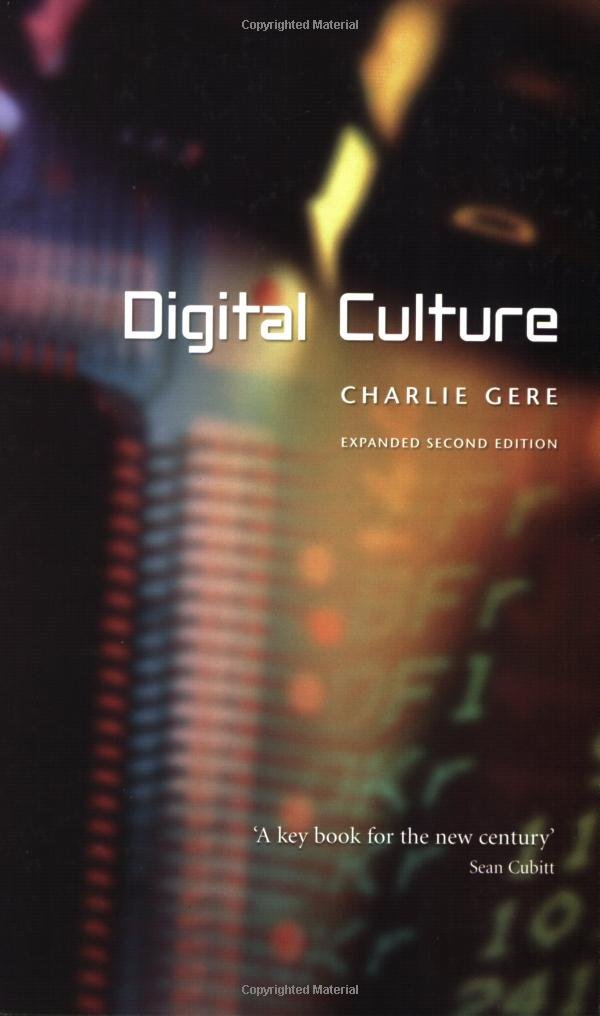
Charlie Gere: What happened after the first edition’s publication was of course, the rise of so-called Web 2:0, which was simply the greater exploitation of the reciprocal possibilities of the Web. I tried to reflect on how this reciprocity was visible beyond the Web itself and was becoming part of a more general culture of engagement and exchange, not that I share some of the more utopian visions of this phenomenon. Indeed, in my new book Community without Community in Digital Culture, I try to counter the, for me, more naive visions of community in relation to digital technology. I advocate a more ‘non-relational’ approach that does not deny the transformative effects of new media in terms of community but thinks of it more in terms of hospitality to the other.
MG: Many of the artists we have worked with are using new media to explore and critique the utopian assumptions you discuss: YOHA, IOCOSE, Liz Sterry, M.I.G (Men In Grey, Julian Oliver and Danja Vasiliev), Heath Bunting, Face to facebook (Paolo Cirio and Alessandro Ludovico), Annie Abrahams and more. Each of them work in a deeply relational way to intervene in the mythologies projected about digital technology; and, with a knowingly crtical eye of the technical limitations and the social controls at work when using networked technology. At different levels, all are producing work that ‘consciously’ incoporate relational contexts, in some way or another, this includes ideas and approaches with autonomy as part of their art, but not necessarily advocating technology as a singular, saving grace.
How do you view the role of this practice in the context of the wider corporate and state impact on the way technical cultures are evolving. How do you see the notion of hospitality working between the arts and these other more mainstream cultures?
CG: I greatly admire and like the work of the artists you mention and others doing similar things. For me they exemplify the complexity of the idea of hospitality. In general the Web is about exchange, whether that of money for goods, social links and relational exchanges in social networks, or the exchange of speech and dialogue in on-line fora. The work of these artists refuses this demand for exchange and profit within a restricted economy. Thus they are in a sense parasitical on the Web. The word ‘parasite’ comes from ‘para sitos’, meaning ‘beside the grain’, and refers to those animals that take advantage of grain stores to feed. They are the creatures to who must be offered hospitality, as a gift, without expectation of return, which means that while they are bound up with the technological systems that comprise the Web, they are not part of the restricted economy of exchange, profit, and return that is at the heart of capitalism, and to which everything else ends up being subordinated and subsumed. Thus they find an enclave away from total subsumption not outside of the market, but at its technical core.
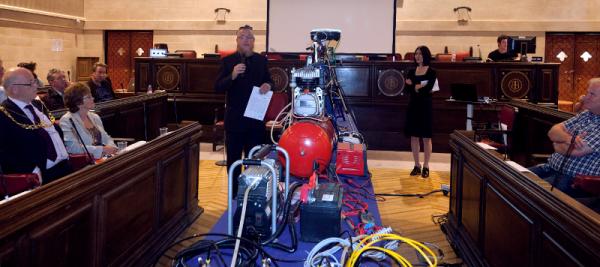

MG: Many are aware that technology and digital culture have changed the world we live in and appreciate their immediate effects on our everyday behaviours and situations. But there is a bigger story to tell, and history can offer us insightful glimpses, important clues and ways into this story about our relationship with technology and digital culture. One of the arguments outlined in your book ‘Digital Culture’ is that digital culture is neither radical, new nor technologically driven. With this in mind, which past developments do we need to acknowledge and be reminded of and why?
CG: For me the emergence of digital technology is part of a much longer story of abstraction, codification, quantification and mathematisation that can be traced back to numerous points in the history of the West, from Ancient Greece, to early Modernity to the rise of industrial capitalism. Here one might think of Heidegger’s use of ‘cybernetics’, a word we normally associate with post-war computing culture, to describe the technology and calculative enframing of modern society which he traces back to the Ancient Greeks and especially to Plato. I am not a particular advocate of digital technology, and while I appreciate its uses, I also think we must try to be aware of how it determines the way in which we think, and in which we conceive of the world. Above all we should not regard it as merely a conduit to an uncomplicated world simply out there, but rather the means by which a particular world comes to be for us. That said, this is very hard, given that in my view, and to adapt a well-known phrase from Derrida, il n’y a pas de hors-media, there’s no Archimedean point outside of our medial condition, from which we can understand it as from a god’s eye view. ‘Media determine our situation’ as Friedrich Kittler put it.
MG: In Digital Culture, you write about the composer John Cage and how he “has had the most profound influence on our digital culture”, and how his influence has opened up various different avenues of creative engagement. And, many of his ideas on interactivity and multi-media not only “have repercussions in the art world”, but also a strong influence on how computers are used as a medium. Which art movements in particular did he influence and what kind of legacy did he leave for others in relation to computers?
CG: Actually Cage’s influence on those using computers in the arts is probably less to do with what he himself did with such technology and more to do with his use of aleatory methods in many his different projects across many artforms. Also there is something about Cage’s own refusal of a normative Western subjectivity that is also consonant with aspects of our hyper-technologised existence with its emphasis on decentering the individual. Both the refusal of such subjectivity and the aleatory work together to produce a new model of the artist as conduit of contingent social forces rather than protean demi-urge or genius.
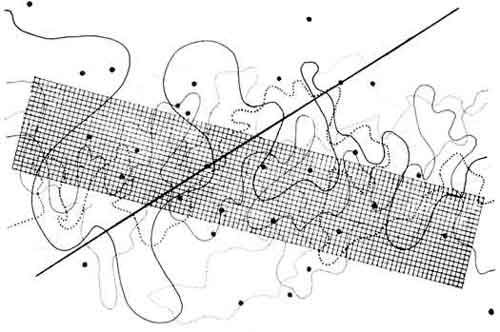
MG: Your new book ‘Community without Community in Digital Culture’, has come out at the same time as Geert Lovink’s ‘Networks Without A Cause: A critique of Social Media’. Lovink asks “How do we overcome this paradoxical era of hyped-up individualization that results precisely in the algorithmic outsourcing of the self? How do we determine significance outside of the celebrity paradigm and instead use intelligence to identify what’s at stake?” [1]
Where are your thoughts in regard to Lovink’s question, and does it relate to what you propose in terms of “hospitality to the other?”
CG: I haven’t read Geert’s book, yet at least… But I am highly sympathetic to what I take to be his position. My view is that the Web is part of a broader set of developments that apparently concern relationally, but actually emphasize the sovereign individual and autonomous subject of modernity, as well as promoting spectacular and image-bound forms of presentation and relation. The problem is that one alternative to this individualization is a kind of fascistic identification with the mass, in the form of fusion that negates the individual. A solution maybe to engage with the idea of the other in terms of difference, as both relational and separate, and yet also that which we depend on for our identity in a process of differentiation; thus the idea of hospitality as a reception of the other in difference.
MG: Community without Community in Digital Culture, is a curious title. It proposes contradictory meanings and these contradictions are clearly explained in the introduction. Although, the last sentence says “In this such technologies are part of the history of the death of God, the loss of an overarching metaphysical framework which would bind us together in some form of relation or communion. This can be understood in terms of contingency, which has the same root as contact.”
Could you unpack this last sentence for us, I’m especially interested in what contingency means to you?
CG: I owe my understanding of contingency to the work of philosopher Quentin Meillassoux, whose book After Finitude is causing a stir. Meillassoux is one of a small number of young philosophers sometimes grouped together under the name ‘speculative realism’, mostly because of their shared hostility to what they call ‘Kantian correlationism’, the idea that there can be no subject-independent knowledge of objects. Meillassoux follows the work of David Hume, who questioned the whole notion of causation; how one can demonstrate that, all things being equal, one thing will also cause another. For Hume causation is a question of inductive reasoning, in that we can posit causation on the grounds of previous experience. Meillassoux pushes the implications of Hume’s critique of causation to a point beyond Hume’s own solution, to propose the only necessity is that of contingency, and that everything could be otherwise, or what Meillassoux calls ‘hyperchaos’.
![Community without Community in Digital Culture [Hardcover]. Dr Charlie Gere. Palgrave Macmillan (2012) http://www.barnesandnoble.com/w/community-without-community-in-digital-culture-charlie-gere/1110025572 See on Amazon.](http://www.furtherfield.org/wp-content/uploads/2012/09/179510500.jpg)
I use his ideas to think through the implications of the ‘digital’. According to the Oxford English Dictionary ‘digital’ has a number of meanings, including ‘[O]f, pertaining to, using or being a digit’, meaning one of the ‘ten Arabic numerals from 0 to 9, especially when part of a number’, and also ‘designating a computer which operates on date in the form of digits or similar discrete data… Designating or pertaining to a recording in which the original signal is represented by the spacing between pulses rather than by a wave, to make it less susceptible to degradation’ (the word for data in the form of a wave being ‘analog’).
As well as referring to discrete data the dictionary also defines ‘digital’ as ‘[O]f or pertaining to a finger or fingers’ and [R]esembling a finger or the hollow impression made by one’, thus by extension the hand, grasping, touching and so on. Much of the book concerns deconstructing the ‘haptocentric’ implications of contact, and communication, especially in relation to the claims made for social networks, and to engage with what I understand as the relation between ‘contact’ and contingency’. ‘Contingency’ is derived from the Latin con + tangere, to touch. ‘Contingency’ enables us think through the implications of the term digital, by acknowledging both its relation to the hand and touch and also to the openness and blindness to the future that is a concomitant part of our digital culture after the death of God.
MG: What other subjects can we expect to read about in the publication?
CG: Touch in Aristotle and medieval theology, cave painting, mail art, Darwin and Dawkins, Luther Blissett, On Kawara, Frank Stella, Bartleby the Scrivener, Christianity – among other things… oh, and a lot of Derrida.
MG: If there is a message you’d like to send to the world, as it carries on regardless with its “permanent exposure of life, of all lives, to ‘all-out’ control […] thanks to computer technology” [2] (Virilio 2000), and it was printed on a banner, or on a billboard in the streets, what would it be?
I am reading Blanchot at the moment, so perhaps something like ‘the disaster has already happened’ (it’s suitably enigmatic to annoy people).
<———————————- The End (for now) ——————————>
The Philosophy Of Software
Code and Mediation in the Digital Age
David M Berry
Palgrave Macmillan, 2011
ISBN 9780230244184
http://lab.softwarestudies.com/2011/04/new-book-philosophy-of-software-code.html
“The Philosophy Of Software” is an ambitious book by David Berry, who has turned his attention from the social relations and ideology of software (in “Rip, Mix, Burn”, 2008) to the question of what software means in itself. The philosophy that he has in mind isn’t the mindless political libertarianism attributed to hackers or the twentieth-century foundational mathematics that is the basis for the structure of many programming languages. It is a serious and literate philosophical reading of software and its production.
Software is an important feature of contemporary society that is rarely considered as a phenomena in its own right by philosophers. Software permeates contemporary society, Berry gives the examples of Google’s profits and the “financialisation” of the economy through software as examples of software’s importance in this respect. In reading this review on a screen you have used maybe a dozen computers, each containing multiple programs and libraries of software directly involved in serving up this page. Digital art and cyberculture often use and discuss software and philosophy (or at least Theory), but usually to illustrate a point about something other than software. The software itself is rarely the subject.
Rather than devote each chapter to a different philosopher’s views on software or adopting a pre-existing description of software Berry develops a novel and insightful philosophical approach to understanding and considering software. After providing an introduction to the foundational ideas and culture of software (Turing, Manovich, Cyberpunk), Berry presents a way of thinking through different aspect of software. The source code, the comments, the compiled program. Each stage and product of the lifecycle of software is given a philosophical context.
Heidegger emerges as the philosopher whose ideas first underwrite Berry’s approach to software. Latour and, in a surprising way, Lyotard play pivotal roles in later chapters. If these are not philosophers you were well inclined towards before then you are in for a pleasant surprise.
Berry presents some typographically appealing and culturally interesting code in order to demonstrate different features of the production of software. The swearing placed in Microsoft’s Windows source code comments by its programmers will mirror the frustration of many of its users. The Diebold voting machine code that illustrates the assumed social and gender roles of its human subjects show that code is very much a product of the social biases of its human authors.
Much of the code illustrated in the book is code poetry or obfuscated code. These are double-coded programs, where source code that can be run by a computer is written and formatted to be not just understandable but evocative and meaningful to human readers as something read rather than run. As with the comments in the Windows and Diebold code, a criticism that might be levelled at such code is that such textual decoration does not affect the compiled (or executed) form of the code.
But comments and formatting are what Berry refers to as commentary code and delegated code in his grammar of code. It has been said that code is written primarily for human beings to read and only secondarily for computers to execute, and obfuscated or poetic code is regarded as high art by many programmers. It must exemplify some of code’s salient features to them, and so it can be used to do so to a more general audience. And the cultural assumptions of code can survive from its source code into its execution and interface: witness the relief of many of Diaspora’s users than “Gender” was a free-form text field rather than a simple binary choice of “Male” or “Female”.
The final chapter on network streams provides a strong critical philosophy of social networking and other software that reduces human experience to a stream of software representations of events. After discussing what it means for a human being to be a “good stream”, Husserl’s idea of “comets” as a precedent for lifestreams and Lyotard’s idea of the stream (both of which predate the streams of the Internet by many years), Berry presents the idea of Dark Streams as a way of resisting the demands of Web 2.0. I would single this out as the most timely and invigoration section of the book and a must-read for anyone involved in producing, consuming, or critiquing networked software culture.
What doesn’t the book cover? There is no visual coding or livecoding. Berry explicitly avoids “screen essentialism”, where the output of code is concentrated on to the exclusion of its production and execution, but despite following programs from their writing through compilation to first assembly code then machine language, running software and algorithms (at the micro level) are not considered, nor (at the macro level) are the architectures of applications or of operating systems. Nor is testing except in passing. But this fits with the emphasis of the book on code as text, and the framework that it provides can be extended to these topics. Hopefully by Berry.
“The Philosophy Of Software” is particularly inspiring as a spur to further research. Each page is brimming with references in the style of the academic papers that many of the chapters were first produced as and whilst this style can be distracting at first (compared with popular science books for example) it is ultimately rewarding and gives the reader any number of fascinating leads to follow up.
What is important about “The Philosophy Of Software” is that it really is about what it claims to be about. Rather than trying to shoehorn software into an existing philosophical or political agenda it considers software as a thing in itself and finds those philosophers and philosophical ideas that best address the vitally important phenomenon of software. However much philosophy, computer science or cybercultural theory you may know this is a book that will set you thinking about software anew.
The text of this review is licenced under the Creative Commons BY-SA 3.0 Licence.